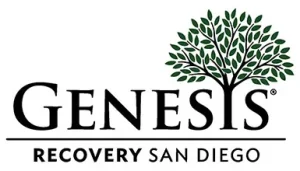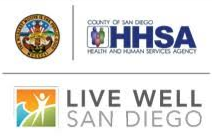The “war on drugs” is a term that we have all heard and are familiar with. It has become synonymous with U.S. drug policy and has a convoluted past. This war has had unintended consequences and the motives behind it are at times, questionable.
Where The War On Drugs Started
President Richard Nixon coined the phrase during a press conference in 1971 and he called drugs “public enemy no. 1”. The counter-culture movement of the ’60s had increased concerns about drug use. So had the Vietnam War, as many soldiers were coming back to the U.S. addicted to heroin. Several different anti-drug initiatives began under the Nixon administration.
On the other side of things, he also pushed for increased arrests and drug raids throughout the country and carried out interdiction efforts in Mexico in an attempt to stop the flow of marijuana into the U.S. A man named John Ehrlichman served as White House Counsel and then Chief Domestic Advisor to Nixon. In a 1994 interview with Dan Baum of Harper’s magazine, Ehrlichman states that the Nixon White House had two enemies: hippies and black people. By associating each with marijuana and heroin, respectively, and criminalizing them both, they could vilify those communities and disrupt them for political purposes. Ehrlichman says that they were lying about drugs.
The Reagan years saw an expansion of the war on drugs. Reagan prioritized punitive and criminal measures for drug offenders. Incarcerations for non-violent drug offenses jumped from 50,00 in 1980 to 400,000 in 1997. Vice President Bush oversaw CIA and military involvement in foreign interdiction efforts. Funding increased for interdiction and decreased for prevention and treatment. Reagan had a zero-tolerance approach and the 1986 Anti-Drug Abuse Act focused on prosecuting drug users. It also enacted mandatory minimum sentencing for drugs again.
Reagan has been accused of using the crack epidemic to garner political support. Because crack was cheaper than powder cocaine, it was prevalent in poorer black inner-city communities while cocaine was more prevalent in white suburban ones. Criminal penalties for crack were much stiffer than for cocaine and led to racial disparities in sentencing and incarceration. Reagan allegedly told DEA official Robert Putnam to play up the harmful effects of crack and encouraged media coverage.
The War On Drugs Today
The hard line stance of zero tolerance that predominated in the ’80s has softened somewhat over the years but we still talk about the war on drugs. President Trump is talking about a border wall to stop the flow of drugs from Mexico. I think that there are probably other political motives there like there have been in the past with drug policy and a wall may slow down the flow of drugs but it most certainly will not stop it. One drug policy expert pointed out that Trump has backed away from his proposal for a solid concrete wall and is open to a wall with slats in it. This expert said that in response, drug dealers will just make their packages thin enough to fit through those slats and they could be handed right through.
It’s estimated that since Nixon first declared war on drugs, the U.S. has spent over a trillion dollars fighting it. And what do we have to show for it? The worst drug epidemic in our nation’s history. In my research, I read about drug policy falling under three broad views of the problem: that it rests with the suppliers, with the users, or the disease model of addiction.
The Suppliers
- Our attempts to fight the suppliers outside of our borders has failed. In the 70’s and 80’s, we made interdiction efforts in Mexico to stop the flow of marijuana. This pushed marijuana exportation to Colombia and opened the doors for cocaine. Drug organizations like the Medellín and Cali cartels flooded the U.S. with coke and became rich and powerful. Violence skyrocketed both in Colombia and in Miami where much of the drugs were coming through.
The eventual fall of the major Columbian cartels led to the rise of the Mexican cartels. Most of the drugs started coming through the southern borders of Texas, Arizona, and California. When a Mexican drug cartel loses its leader through arrest or death, it reorganizes or breaks up into new ones. Now with fentanyl, a good deal of it is coming from China. Drug dealers always find a way. Not to mention the fact that much of the current opioid epidemic was homegrown right here in the U.S. through Purdue Pharma and their product, OxyContin. Much of our drug policy has focused on the supply side.
The Users
- Fighting drugs on the demand front have not proved fruitful either. Locking up drug users doesn’t do anything to help them or fix the problem at large. The incarceration of the users doesn’t deter most of them from using again. It overcrowds prisons, which themselves are rife with drugs. Drug dealers should be prosecuted but overly stringent sentences for low-level, nonviolent offenders do not make any kind of significant dent in the overall drug supply. There are so many low-level dealers and the arrest and prosecution of one or several does not deter the rest of them from dealing. The individual drug addict is also not deterred from continuing to use.
Disease Model of Addiction
- Looking at addiction as a treatable disease seems a more sensible approach and we seem to be moving, albeit slowly, in that direction. For years, we have watched the war on drugs fail. Our understanding of the nature of addiction has increased. The opioid epidemic is affecting so many people’s lives either directly or indirectly. If we’re not addicts ourselves, chances are we have a friend, relative, or coworker who is. We’re being faced with the problem like we never have before. I think that this has opened the eyes and minds of many people who may previously have had misconceptions about addiction. If harm reduction measures are shown to be successful, hopefully, our drug policy will continue to shift towards education, prevention, and treatment.
In another blog, I look at a controversial harm reduction strategy adopted by some European countries that many people believe is working: decriminalizing the consumption of all illegal drugs.

